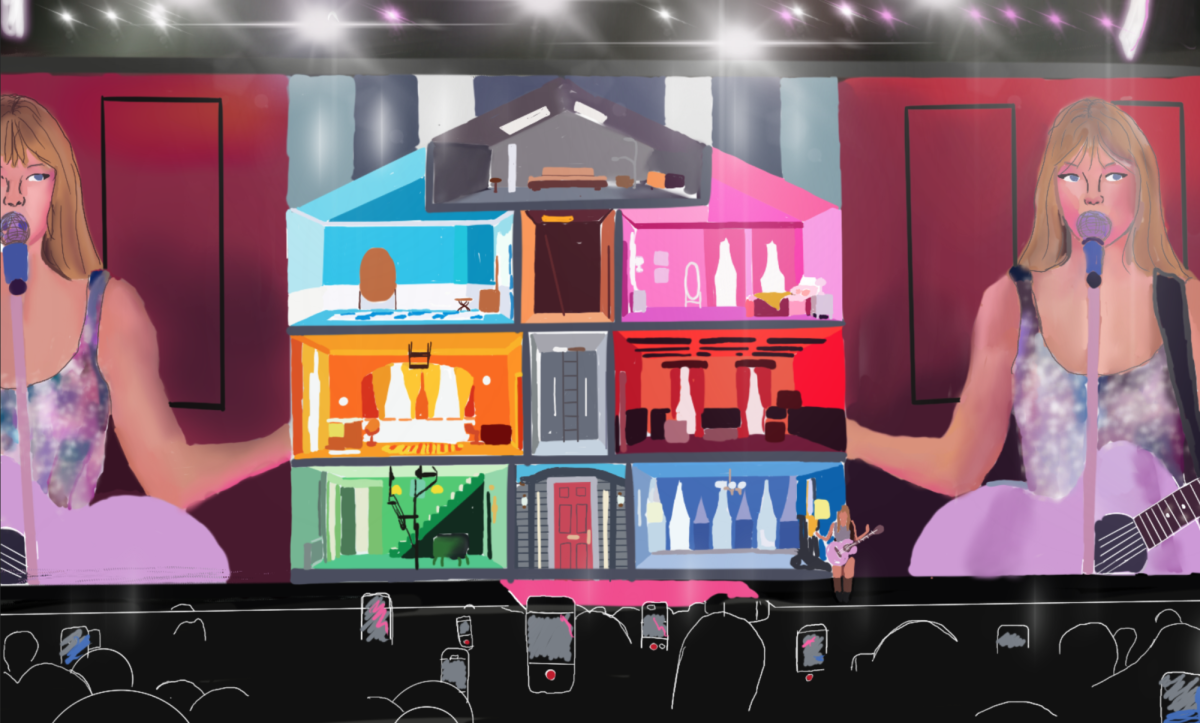Newton’s Third Law states that every action has an equal and opposite reaction. Many concertgoers believe they simply are enjoying a memorable night of singing with their favorite stars. Yet unbeknownst to many, their actions have another reaction: a push towards a thriving economy.
Since the pandemic, live music and festivals have rebounded, creating a huge boost for local economies. From the concerts of mega pop stars like Taylor Swift to popular festivals such as Coachella, live music is amplifying local economies and assisting them to rebound.
To understand the large scale economic impacts, Mr. Marc Pierlott, an AP Economics teacher at Cherry Hill High School East, explained the concept of the “money multiplier.”
“The reason why cities would want big events like concerts or Super Bowls is because it brings money in from outside the town’s economy. So people involved in these events, all of a sudden, have an influx of money. They go home to their neighbor, other suburbs, and spend locally, and
then that person locally – that butcher, that baker, that florist – now has more money that they spend locally, so the money ripples and multiplies through the economy,” he said.
Considering this, with concerts, attendees find themselves spending in various sectors expanding their monetary effects with purchases not only on tickets but also on local food, attractions, accommodations, and merchandise.
“I’ll try to theme my outfit around the concert. And then I’ll buy accessories. And buy snacks and drinks too,” said avid-concert goer Grace Ewing (‘24).
According to the U.S. Travel Association, with Taylor Swift’s Eras Tour, Swift fans, “Swifties,” averaged $1,300 per person of spending in local economies on travel, transportation, hotel stays, food, merchandise and costumes. In total, a study by QuestionPro calculates that Swifties
have already directly spent around $5 billion in destinations around the country, leading to boosts in 20 different cities all across the United States.
“For Taylor Swift, especially at the Lincoln Financial [Center], I had friends who would drive in and say there were like 20,000 people in the parking lot just in their cars trying to hear, and they were buying stuff from the hundreds outside selling hot dogs and T-shirts,” said Ewing.
But, it is not just Swift generating economic activity. Beyonce’s “Renaissance” Tour has also yielded similar effects, averaging over $1,800 in spending per per- son, even more than Swift. Overall, a larger trend seems to emerge. There is increasing prevalence and impact of these world tours with various artists. Coming out of the pandemic, with some pent-up demand for concerts and social experiences, concerts are becoming a bigger and better spectacle.
“I definitely think people dress up more and make more of an event out of it. People will go with awesome outfits and pictures and post on social media, which makes the next person want to do the same,” said Ewing.
Beyond solo concerts, major festivals also deliver tourism stimulation. Restaurants stock up on supplies, hotels fill up months in advance and hundreds are hired for temporary concert production jobs. According to the Coachella Valley Economic Partnership and the Greater Palm
Springs Convention and Visitors Bureau, Coachella along with Stagecoach, festivals produced by the same promoter, created about $704 million in economic activity.
Though concerts may seem like brief events, their positive economic ripples persist long after the crowds and music stop. Like Coachella, Lollapalooza, an annual American musical festival, generated over $300 million in direct and indirect economic revenue in Chicago last year, according to a new study by Texas-based AngelouEconomics, funded by Lollapalooza’s organizer, C3 Presents.
From artists’ world tours to multiple-day festivals, this music scene creates boosts in jobs, hotels, restaurants, shops and transportation in cities large and small, allowing music lovers and local economies to simultaneously sing a happy tune.



